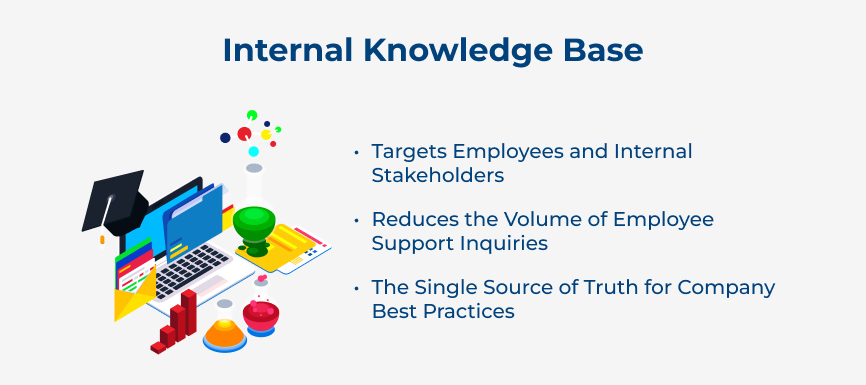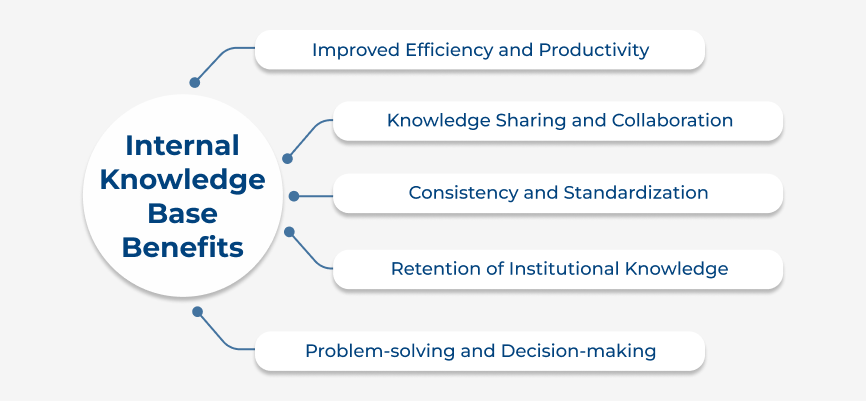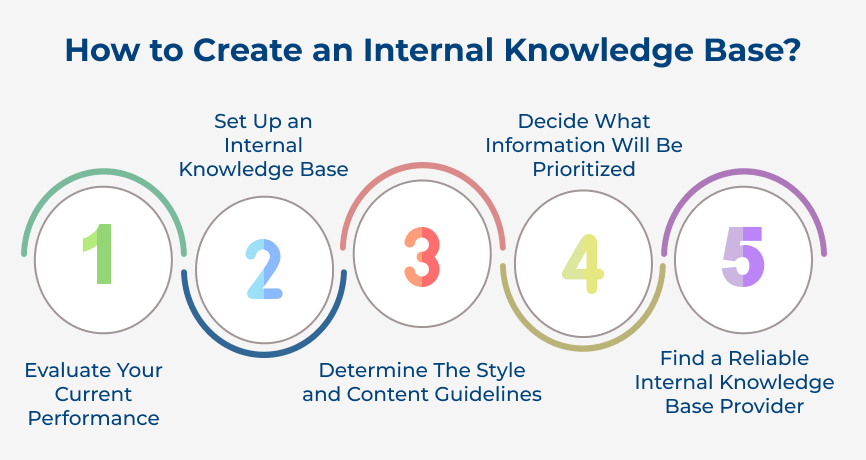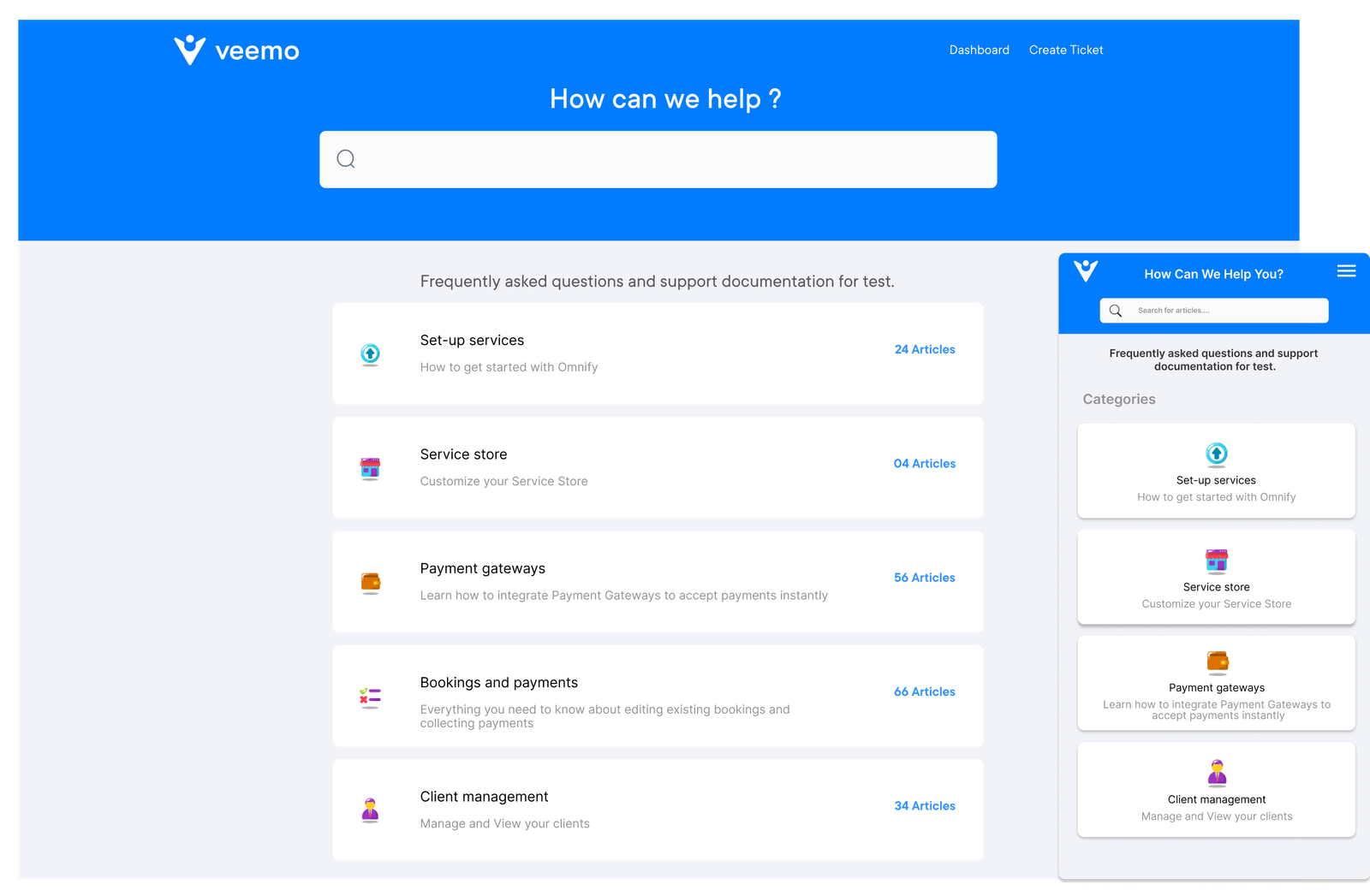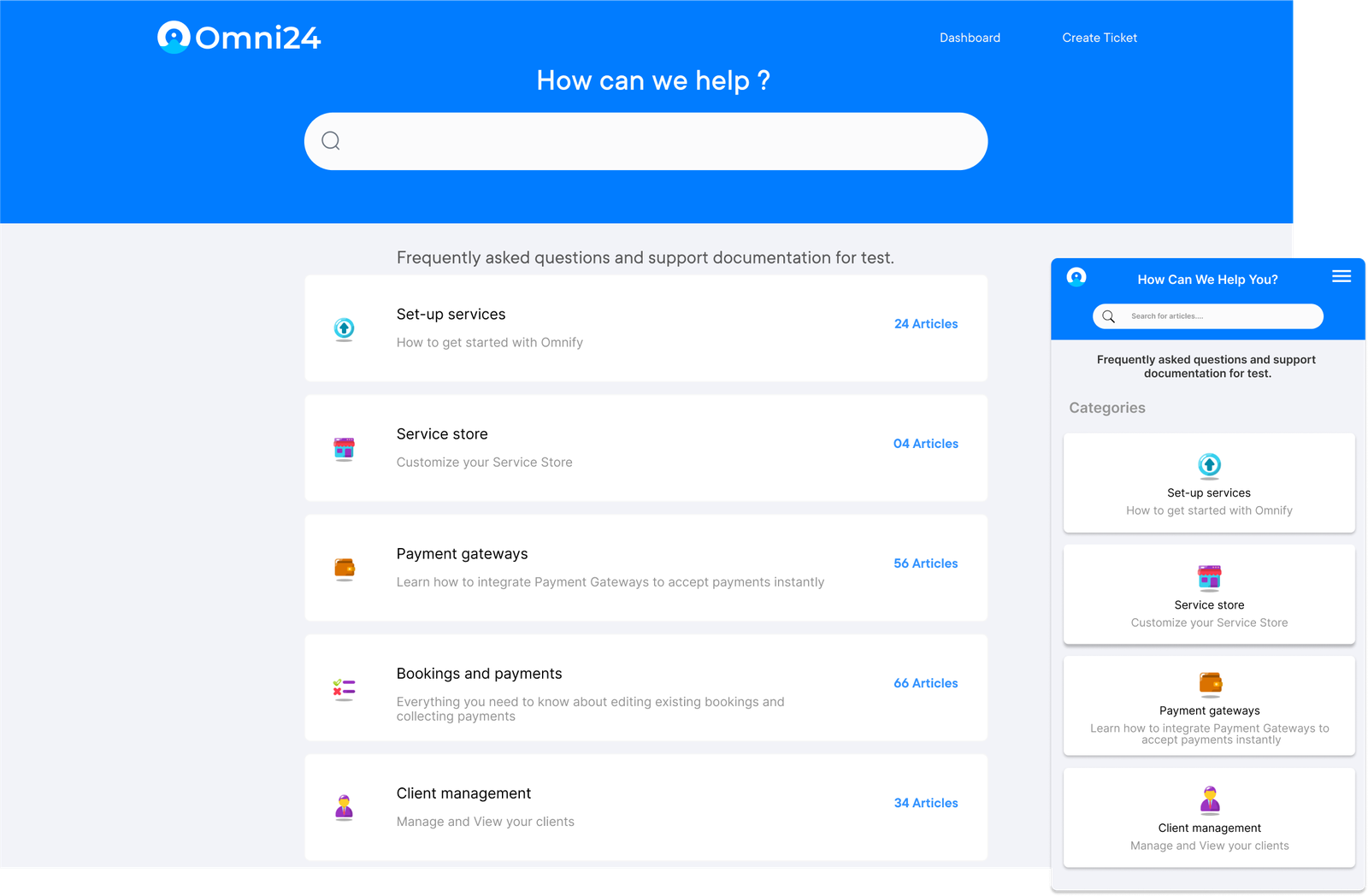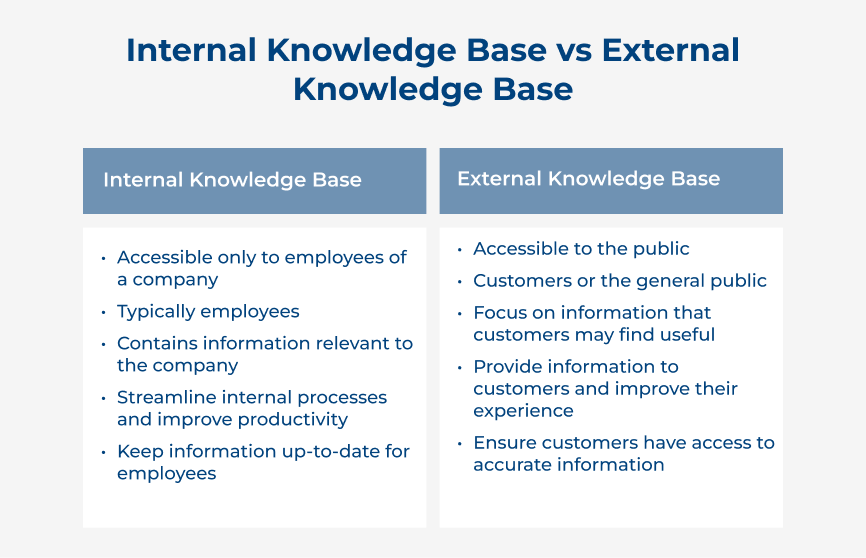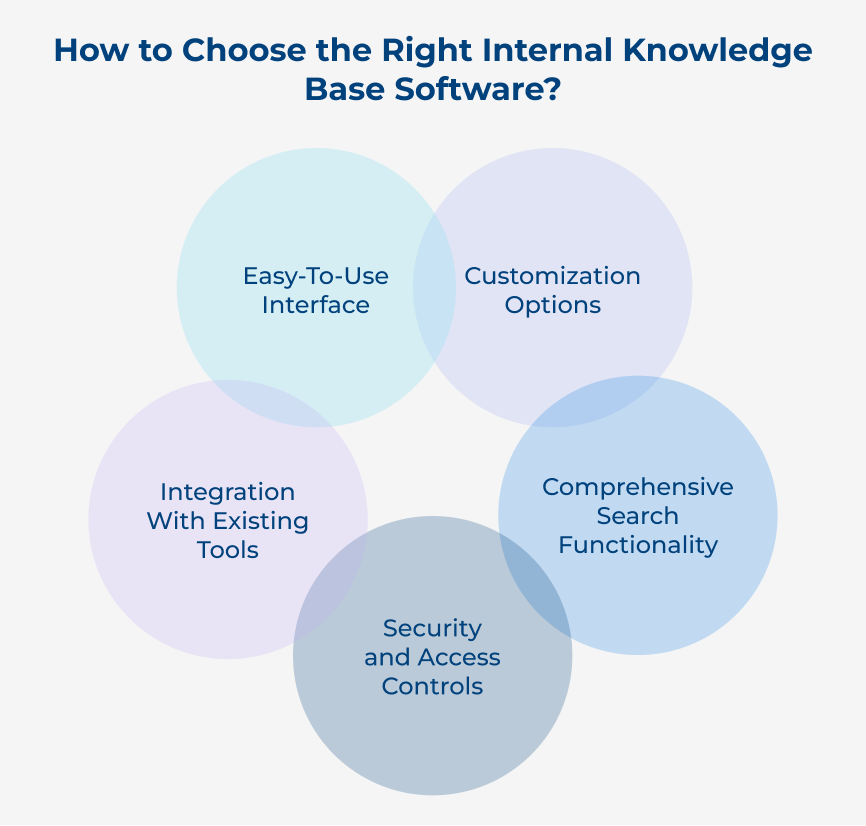1. Evaluate Your Current Performance
Creating an internal knowledge base is crucial for any organization to streamline information sharing, enhance collaboration and improve overall productivity. One of the initial steps in the process is to evaluate their current performance and identify areas for improvement. It will help businesses pinpoint existing challenges and gaps in their knowledge management strategy.
The assessment allows businesses to understand what works well and what needs improvement, helping them create a more effective internal knowledge base. The step directly contributes by providing insights into content gaps and identifying the specific information or resources that employees seek. Developing targeted content and resources to address the needs makes the knowledge base comprehensive.
Ways to implement:
- Conduct surveys or interviews with employees to gather feedback on their current knowledge management experience.
- Engage workshops with cross-functional teams to identify knowledge gaps and potential areas for improvement.
2. Set up an Internal Knowledge Base Team
Setting up an internal knowledge base team is an essential step in ensuring the effectiveness and accuracy of the knowledge base. When a dedicated team is responsible for managing the internal knowledge, businesses can ensure that the information is up-to-date, relevant and easily accessible. The team plays a crucial role in organizing, creating and curating content, ensuring that it is easily searched for by employees.
An example of how the step can be implemented is by forming a cross-functional team consisting of representatives from departments such as customer service, marketing and operations. It ensures the knowledge base encompasses a wide range of expertise and caters to the needs of various departments.
Ways to implement:
- Provide training to the knowledge base team members on how to organize and structure information effectively. It will help them create a well-organized and easily navigable knowledge base.
- Encourage collaboration among team members to ensure that the knowledge base represents diverse perspectives and expertise. It will result in a comprehensive and robust information repository.
3. Determine the Style and Content Guidelines
Defining the style and content guidelines ensures the knowledge base is easy to navigate for employees seeking information. Consistency in tone and style helps to establish a professional image, enhancing readability. The content guidelines help to standardize the information shared in the knowledge base, ensuring that it is accurate, up-to-date and relevant. When employees have a reliable and single source of information, it enhances their productivity.
Let’s say a company wants to create an internal knowledge base to provide training materials to its employees. Determining the style and content guidelines would involve deciding whether to use a formal or informal tone. It leads to establishing a standardized structure for training materials and defining guidelines for the inclusion of visual interactive elements.
Ways to implement:
- Collaborate with key stakeholders to ensure that the guidelines align with the organization’s goals and objectives.
- Regularly revise the style and content guidelines as per the changes in the organization’s needs, ensuring the knowledge base remains relevant.
4. Decide What Information Will Be Prioritized
Prioritizing information helps avoid clutter and confusion within the knowledge base. It saves time and effort for employees as they can easily find the information they need without sifting through irrelevant or outdated resources. The approach enhances efficiency and productivity by streamlining access to critical knowledge, allowing employees to make well-informed decisions.
Prioritizing information is essential to create an internal knowledge base. Start by identifying the core aspects of the organization that require extensive knowledge sharing. Let’s take the example of a software development company. They might prioritize information related to coding standards, debugging techniques and project management practices.
Three ways to implement this step include:
- Identify the specific knowledge and information gaps within the organization. Survey employees, conduct interviews and analyze feedback to determine which areas require priority.
- Organize information in a structured and systematic manner by creating categories. It enables employees to navigate the knowledge base easily and locate relevant resources quickly.
5. Find a Reliable Internal Knowledge Base Provider
A reliable knowledge base provider is crucial in this process as they offer the necessary tools and support to maintain an effective knowledge base system. A reliable provider enables businesses to create a centralized platform where employees can easily access and share information. It reduces the need for constant communication and minimizes the chances of information being misplaced or lost.
A good internal knowledge base provider helps to create an effective knowledge base by providing features such as a user-friendly interface, search functionality, customizable categories and permission controls. The features enable organizations to organize and categorize information effectively, making it easily accessible to employees.
Ways to implement:
- Involve key stakeholders in the decision-making process to ensure buy-in and adoption of the internal knowledge base system.
- Train employees on how to use the knowledge base effectively, using search functionalities and adhering to privacy protocols.
Internal Knowledge Base Examples
Many successful brands have recognized the importance of having a well-developed knowledge base and have embraced this strategy to drive their business forward. Let us take a look at some of them below:
1. Google
Being one of the world’s leading technology companies, Google understands the significance of knowledge management. They have implemented an internal knowledge base called “Google Wiki” that serves as a repository of information for their employees.
Google’s workforce is enabled to access a wide range of resources, including technical documents, product information, best practices and internal guidelines. Ensuring that employees have easy access to valuable knowledge enables Google to promote productivity, encourage collaboration and empower their workforce to make informed decisions.
2. Amazon
Amazon is renowned for its customer-centric approach and its internal knowledge base, known as “Amazon Wiki,” plays a crucial role. It serves as a comprehensive resource for employees to access policies, procedures, product information and customer service best practices.
Amazon’s employees deliver exceptional customer experiences by providing accurate and up-to-date information. Ensuring that employees have the necessary knowledge to support their customers has enabled Amazon to establish itself as a customer service leader in the e-commerce industry.
3. Airbnb
Airbnb has recognized the importance of facilitating knowledge sharing among its employees. They have implemented an internal knowledge base called “Airbnb Knowledge,” which provides their employees with access to a vast array of information about their roles and responsibilities.
The approach not only helps employees stay informed and up-to-date with company policies but also promotes a culture of collaboration. Airbnb ensures that every employee can provide exceptional service to hosts and guests by empowering their workforce with valuable knowledge.
Top Internal Knowledge Base Software
Employees can easily contribute to a centralized database of knowledge, improving productivity and streamlining operations. If you’re looking for the best internal knowledge base software for your business, here are the top options available:
1. Veemo Support






